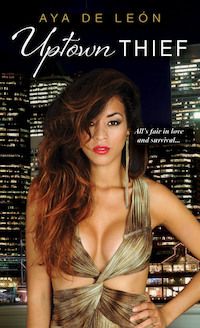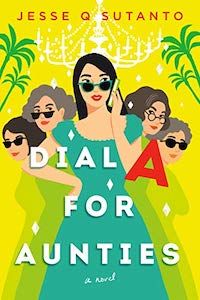
Criminals Abound: 10 Kinds Of Crime Plots
I’ve recently written about the types of plots readers can encounter in murder mystery books and mystery books that don’t focus on murder. This time I wanted to look at the kind of plots you can expect between the pages of crime novels. What I mean by crime plots, not mysteries, is that the focus isn’t on solving a mystery or trying to answer a question. As one example: rather than who robbed the bank, which would be a mystery novel with a detective lead following the clues after a robbery, we’re following the criminals as they plan the robbery, rob the bank, and/or then try and get away with it. Basically, the focus of crime novels is on the criminal(s), the crime(s) committed, and who it affects.
And like mystery novels, there is a wide range of crime novels which include different moods, categories, and types. They can be fun novels about heists (think Ocean’s 11 if it were a novel) or it can be literary, character-focused and explore the long reaching damage a crime can have over a span of time on those who knew the victim and/or perpetrator.
This is not an exhaustive list, but it will give you a good idea of different plots you can find in the crime genre to help you find your next great criminal–er, read.
Heists / One Last Job
There is either a thief or group of people who have decided to steal something(s). This can play out in a variety of ways, including a mix of the below examples.
The Robin Hood criminals: In Aya de León’s Uptown Thief a group of women target wealthy CEOs who are awful humans to steal from in order to fund their health clinic in New York for underprivileged women.
There was a heist in the past that went wrong and now something/someone from that event is back: Get ready to be on the edge of your seat with Ghostman (Jack White #1) by Roger Hobbs.
One big job is being planned and there is a lot riding on this being pulled off with high stakes; A person in retirement or no longer in the crime world has to come back to pull off one more job: Blacktop Wastesland by S.A. Cosby, which also has the best car chase scenes.
The book has multiple heists throughout: If a teen girl with a team of drag queens pulling off heists sounds like fun — it is! — pick up Death Prefers Blondes by Caleb Roehrig.
Stealing back stolen items: Portrait of a Thief by Grace D. Li follows a group of Chinese Americans tasked with stealing Chinese sculptures from museums.
Revenge
Whether they are justified or not, revenge novels follow at least one character (sometimes a group) who are seeking revenge. Many of these novels place the revenge element in a twist — I tried to avoid those as to not spoil any books. In They Never Learn by Layne Fargo, we have a revenge fantasy type novel that follows a university professor who chooses the most despicable guy on campus every year and kills him. In Mindy McGinnis’s The Initial Insult, we have a teen girl seeking revenge and answers from her ex-best friend by slowly bricking her into a wall à la Edgar Allan Poe (The Cask of Amontillado) unless she confesses to what she knows.
For a look at the cost of revenge we have The Collective by Alison Gaylin which follows a grieving mother who joins a group enacting revenge on those who have gone unpunished for their crimes, like her daughter’s killer. And in Confessions by Kanae Minato, translated by Stephen Snyder, a teacher decides to tell the class a story on her last day of class that will upend everything…
Covering Up A Murder
In a mystery novel the murder is central because the focus is on figuring out who the killer(s) is. In crime novels we know and follow them. In Dial A for Aunties by Jesse Q. Sutanto — which smashes a crime novel with a romance novel together — we follow the aftermath of an accidental, in defense killing where instead of calling the cops a family comes together to get rid of the body and comedy ensues. In Sarah Gailey’s The Echo Wife, we follow a scientist and the clone her husband made of her without her knowledge, who at one point have to band together to cover up a murder.
Social (In)Justice
While there has recently been a section of true crime focusing on social injustices you can also find fictional crime books focusing on these issues. These crime novels spotlight the social justice systems failures/systemic injustices in our society and the harm done to people of color and marginalized people. In They Can’t Take Your Name we watch the clock tick down to an execution for a wrongly convicted man as a bar owner with a secret from the past wrestles with what to do when he meets the condemned man’s daughter. Steph Cha’s Your House Will Pay uses a real event (1992 Los Angeles riots) and case (the murder of Latasha Harlins) to explore family, racism, the injustice system, violence, revenge, culture, forgiveness, and the inability to forgive.
Running From…
Someone(s) is running from someone(s) else: A criminal is running from the law; a non-criminal is running from criminals; criminals are running from criminals; A wrongly accused person is running from the law to prove they are innocent. In the page-turner She Rides Shotgun by Jordan Harper, a father marked to be killed by the aryan brotherhood picks up his 11-year-old estranged daughter and they go on the run to save their lives. There is also the abused woman on the run from her partner à la Sleeping with the Enemy. The latter works in any kind of abusive/dangerous relationship, publishing has just generally focused on girls/women escaping men.
Fallout From A Crime
These crime novels focus on the ripple effect of a crime. In What’s Left of Me Is Yours by Stephanie Scott we have a daughter finishing her legal degree who is about to find out the truth of her mother’s death years ago — told in past and present, mother and daughter voice. Lemon by Kwon Yeo-Sun and translated by Janet Hong is a South Korean novel that does have a mystery component. A sister wants to know who killed her sister, but it focuses instead on the long-reaching arm of how a crime can affect those connected over time. Three-Fifths by John Vercher starts with Bobby being released from prison in the mid-’90s and meeting up with a friend who commits a hate crime, which unravels Bobby’s entire life.
Contract Killers
Murder for hire is what we get in these crime novels. We follow either professional(s) or a bebe hit person learning the ins and outs of the field. In Killers of a Certain Age by Deanna Raybourn, we’re treated to a team of hit women who are at the age of retirement now and learn the difficult lesson that maybe they’ll get neither retirement or any more missions because the agency has put a hit out on them. In Nikki Dolson’s novella All Things Violent, we follow Laura Park, a hitwoman technically still in training grappling with the unraveling of her life as she tries to get her job done. The Old Woman with the Knife by Gu Byeong-mo, translated by Chi-Young Kim takes us into the life of a pest controller (hit woman) in her ’60s who has just made a mistake and is finding out what exactly happens to contract killers after they reach a certain age.
The Killer’s POV
Here we follow a murderer with the focus on their life, motivations, and thoughts. In An Elderly Lady Is Up to No Good by Helene Tursten, translated by Marlaine Delargy we get to know a murderous Swedish octogenarian in connected stories that read like a darkly funny novel. Stephanie Kuehn’s When I Am Through With You is a YA crime novel that starts with Ben Gibson, while in juvenile detention, telling us he murdered his girlfriend. Sascha Rothchild’s Blood Sugar starts with Ruby explaining that she is not a sociopath and while she may have killed people, starting at age 5, she is innocent on the current charge of murdering her husband. In the short story collection Diary of a Murderer: And Other Stories by Kim Young-ha and translated by Krys Lee, the first story follows a serial killer who now has dementia.
Cons
If your mind went to fiction first — true crime has a lot of con artist stories! — you probably thought of Tom Ripley. Here we step into the world of a person pretending to be something/someone they are not, or selling fake goods, to trick an unsuspecting person(s). Crime novels with a con artist usually follow them as the lead, follow the victim as they get conned, or the person who gets roped into participating in the con.
In Counterfeit by Kirstin Chen, we watch as a mom of a toddler connects with a past college roommate and finds herself in the world of counterfeit handbags. Who Is Maud Dixon? by Alexandra Andrews follows a woman in publishing who jumps at the chance to work for a reclusive and anonymous author, until she’s presented with the opportunity to literally step into the author’s shoes.
Wait For It Crime
Finally, a recent favorite type of novel for me is one where you may not even know you’re reading a crime novel until you suddenly do. At the start of the book you’re not presented with a crime or criminals, but rather you start a story that feels contemporary or literary and the longer it goes on, the more apparent it is that a situation(s) is intensifying and we are on a fast course to “something bad is probably gonna happen” to someone(s).
In Susie Yang’s White Ivy we follow the “desperate” social climber and in Megan Abbott’s The Turnout we watch two sisters and one’s husband as they work to keep a dance studio and their lives from imploding when a contractor shows up after a fire.
There you have 10 different types of crime plots if you’re in the mood to spend some time in the criminal world.
























